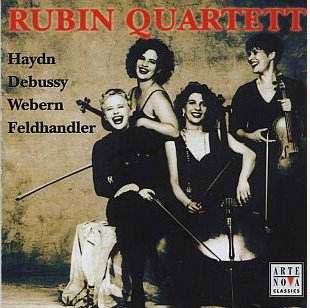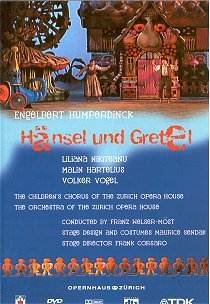 Composer: Joseph Haydn
Composer: Joseph Haydn
Works: String Quartet in D minor, Op 42; Claude Debussy – String Quartet in G minor, Op 10; Anton von Webern – Six Bagatelles for string quartet, Op 9; Jean-Christophe Feldhandler – “Nacht und Nacht”
Performers: Rubin Quartet
Recording: May 1995 at the Schloss Morsbroich, Leverkusen
Label: ARTE NOVA CLASSICS 74321 90069-2
The Rubin Quartet’s recording presents a compelling exploration of the string quartet repertoire, juxtaposing works by Haydn, Debussy, Webern, and a contemporary piece by Jean-Christophe Feldhandler. Each of these composers occupies a distinct historical and stylistic position, offering listeners a rich tapestry of tonal and emotional landscapes. Haydn, often heralded as the father of the string quartet, provides a foundation with his D minor quartet, Op 42, which stands out as a solitary gem amidst his prolific output. Composed in 1785, this work is imbued with an introspective darkness that sets it apart from the more exuberant and balanced structures of his earlier quartets.
The Rubin Quartet approaches Haydn’s Op 42 with commendable restraint, capturing its somber essence while infusing it with emotional commitment. The opening Allegro con brio unfolds with a sense of gravity, the players maintaining a delicate balance between the work’s inherent melancholy and its affirming gestures. The clarity of articulation and the dynamic contrasts are particularly noteworthy, drawing attention to the intricate counterpoint that characterizes Haydn’s writing. Unlike other quartets in minor keys, which often succumb to despair, the Rubin Quartet’s interpretation suggests an underlying resilience, a choice that elucidates the work’s multifaceted emotional palette.
Debussy’s String Quartet in G minor, Op 10, a cornerstone of the impressionist repertoire, receives a nuanced performance from the quartet. The work’s lush harmonies and innovative textures are realized with sensitivity, although moments of ensemble coherence occasionally falter in the more expansive passages. The second movement, for instance, showcases the quartet’s ability to navigate the intricacies of Debussy’s cyclical themes, yet there are times when the rhythmic unity among players could be more cohesive, particularly during the climactic tutti sections. Despite this, the Rubin Quartet’s interpretation resonates with a warm, inviting tone that captures the spirit of the composer’s early explorations into color and atmosphere.
Webern’s Six Bagatelles, a stark contrast to the preceding works, presents a challenge both for performers and listeners, as it embodies the essence of early atonalism. The quartet’s execution is marked by precision and intensity, expertly navigating the abrupt shifts and dissonances that define Webern’s style. The third Bagatelle, with its fleeting moments of silence juxtaposed against sudden outbursts, exemplifies the group’s technical prowess and deep understanding of the piece’s expressive demands. The musicians grasp the music’s abstract qualities while also conveying its emotional weight, a testament to their interpretive insight.
Feldhandler’s “Nacht und Nacht,” based on Paul Celan’s poetry, introduces a contemporary voice that, while more accessible than Webern, holds its own in this diverse program. The quartet employs a harmonic language that, while straying from conventional tonality, remains anchored in a cohesive framework. The wide-ranging moods unfold with clarity, and the Rubin Quartet demonstrates a keen grasp of the work’s emotional landscape. The piece’s contrasting textures and dynamic fluctuations are effectively communicated, and the quartet’s expressiveness is particularly poignant in the more lyrical passages.
The production quality merits mention as well. The sound engineering captures the quartet’s tonal richness and the subtle nuances of their interpretations, allowing the listener to appreciate the intricate interplay between the instruments. The acoustic environment of Schloss Morsbroich adds a warmth that enhances the overall listening experience.
This recording from the Rubin Quartet showcases a commendable blend of youthful vigor and interpretative maturity. By engaging with a program that spans centuries and styles, they not only highlight their versatility but also invite listeners to appreciate the connections between these distinct yet related works. Each performance reflects a thoughtful consideration of the music and a commitment to excellence, suggesting that this ensemble is poised for a significant presence in the chamber music world. The Rubin Quartet has indeed presented an engaging and thought-provoking recital, one that merits attention from both seasoned enthusiasts and newcomers alike.



